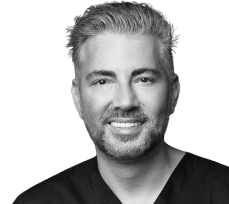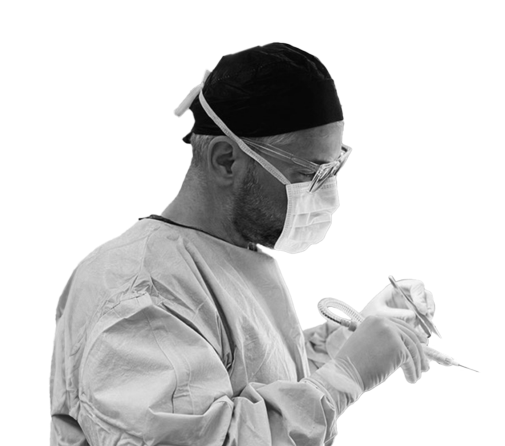Australia’s registered plastic surgeon with experience in:
- Breast Augmentation Mammoplasty & Recovery Technique
- Complicated Breast Revision Surgery & Internal Bra System
- Tuberous Breasts & Breast Asymmetry Corrections
- Comprehensive understanding in Fat Grafting Technique
Dr Tavakoli’s Philosophy on Post-Pregnancy Surgery
To address changes to the breasts and abdomen after pregnancy and breastfeeding, some women might seek a combination of surgical procedures.
Dr Tavakoli is committed to helping women according to their unique needs and desires. He performs post-pregnancy surgery for women who wish to change their breast or abdomen appearance, if they are suitable candidates and have realistic goals.
Your consultation with Dr Tavakoli
Before undergoing your post-pregnancy surgery, we will have a thorough, cost-free and obligation-free consultation to discuss your medical history and desired results, to determine if the procedure is right for you and to form a personalised procedure plan tailored to your needs. Feel free to discuss any concerns you have about the procedure and ask as many questions as you like.
We will need to discuss health and medical factors like any prior surgeries, medical conditions, current medications you are taking, and lifestyle habits such as smoking or alcohol consumption. We’ll also conduct a physical exam to assess the quality and quantity of excess skin and fat in the abdominal area, as well as the condition of the abdominal muscles.
When putting your procedure plan together, we’ll explain the specific surgical techniques that will be used for each component of the surgery, including the type of anaesthesia and incision locations.
This will give you a clear idea of what to expect during the procedure and help you to understand what your results may look like and that results will vary for each patient.
During the consultation, we will be transparent about the realistic outcomes of the procedure and help you understand what you can expect in terms of results. We’ll discuss the outcomes and limitations of the procedure, as well as the potential risks and complications.
To support your recovery, we’ll also go over a list of recovery instructions and what you can expect after the procedure, including activity restrictions and follow-up appointments. This will help you prepare for the recovery period ahead of time, knowing what to expect and being able to plan to take the necessary time off work that you will need.
Your personalised plan will help us to estimate your total procedure costs, and provide you with a quote. As mentioned before, this initial consultation is free and even after receiving your quote, it is up to you as to whether you fully decide to undergo the procedure.
POST-PREGNANCY PROCEDURES:
1. BREAST AUGMENTATION MAMMOPLASTY AND MASTOPEXY (IMPLANTS & LIFT PROCEDURES)
Dr Tavakoli says the degree of change women experience in their breasts can depend on whether they have breastfed and the duration of their breastfeeding. “The more a woman has breastfed, the more dramatic the changes that occur in her breasts usually are” he explains.
According to Dr Tavakoli, many women post-pregnancy and/or breastfeeding opt for a breast augmentation mammoplasty surgery. For women who have experienced a descent of the breast tissue and some volume loss, a breast lift mastopexy may be combined with breast augmentation mammoplasty. If there is no change to the volume of the breast, a breast lift mastopexy might suffice. Other women might require both breast remodelling with fat to obtain the shape they desire.
2. ABDOMINOPLASTY
The abdomen is typically the area most affected by pregnancy,’ says Dr Tavakoli. As the uterus expands during pregnancy, pressure is placed on the muscles and skin which can cause laxity of the abdominal wall postpartum.
Abdominoplasty (tummy tuck) allows Dr Tavakoli to address this area through repair of the rectus muscle separation and removal of excess fat and skin. This procedure may be combined with liposculpture.
‘Abdominoplasty (tummy tuck), when combined with liposculpture, can remove excess skin and fat from the abdomen, repair any underlying damage to the abdominal muscles and reposition the umbilicus,’ says Dr Tavakoli.
4. LIPOSCULPTURE AND BILATERAL BUTTOCK AUGMENTATION (BBL)
In addition to performing liposculpture in combination with an abdominoplasty, we can also target areas such as the flanks and inner or outer thighs.
Dr Tavakoli stresses that women who undergo an abdominoplasty or bilateral buttock augmentation (BBL) need to commit to a healthy lifestyle, involving a sensible diet and exercise regime, in order to maintain the results.
He adds that it is not his policy to operate on a post-pregnancy patient until the mother’s last child is at least 18 months old. ‘I usually advise patients to complete all their pregnancies before commencing surgery, otherwise results might not be maintained,’ says Dr Tavakoli. He also screens patients to ensure they are not suffering from postnatal depression.
Recovery and Aftercare
The recovery details and your aftercare instructions will very much depend on the details of your personalised procedure, and can vary per patient since a post-pregnancy procedure can include a variety of surgeries.
General instructions for the different types of procedures listed above can typically include avoiding strenuous exercise, wearing compression garments as instructed by your surgeon to reduce swelling and promote healing, and following a balanced, healthy diet to aid in healing and recovery. If you need, you may be able to take medication but make sure you do so by following your surgeon’s instructions.
For your comfort, we recommend wearing loose-fitting clothing, particularly avoiding tight underwear or pants if you have undergone a labiaplasty. If you do undergo a labiaplasty, you should also avoid sexual activity for about four to six weeks after the procedure to allow sufficient time to heal.
You will have follow-up appointments to monitor your healing progress and assess the results as they begin to show. You will receive further information about the post-operative process during your consultation.


